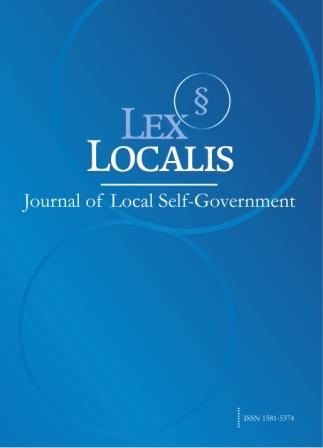An analysis of the interactivity of indicators in public management communication: a perspective based on conversation analysis
DOI:
https://doi.org/10.52152/800083Keywords:
public governance; indicatives; language; conversation; spaceAbstract
This study systematically explores the interactive function of directives in public management communication from the perspective of conversation analysis. Based on a corpus of public documents from nine local governments, KH Coder 3.0 was used to conduct high-frequency word statistics and visualization analysis, revealing the distributional characteristics and interactional significance of the three types of directives, namely, personal, temporal, and spatial directives, in the discourse structure. It is found that the use of personal indicators strengthens the identity construction and position negotiation between the two parties in communication, such as the high-frequency use of expressions such as “we” and “you”, which effectively shortens the psychological distance between the government and the public; temporal indicators are analyzed through the following expressions The time indicative word enhances the timeliness and verifiability of language expression through semantic units such as “today” and “this week”; the space indicative word builds up a sense of timeliness and verifiability with the help of expressions such as “here” and “there”. There” and other expressions to build a specific geographical image, which enhances the directionality and accessibility of the information. In addition, the study analyzes the subjectivity system in tourism public documents in the context of tourism management discourse and finds that tourism publicity discourse builds emotional resonance, strengthens discourse rhythm, and enhances persuasive power with the help of indicatives. This paper innovatively applies the interactive analysis of indicative words to the study of information transmission and identity construction in the context of public management, revealing the multiple functions of linguistic forms in governmental communication, such as cognitive regulation, emotional mobilization and trust construction, and expanding the application path of conversational analysis and discourse linguistics in the study of public governance.
References
Shandryk, V., Radchenko, O., Radchenko, O., Koshelenko, A., & Deinega, I. (2024). Digitalization as a global trend of public management systems modernization. In Digital Technologies in Education: Selected Cases (pp. 3-16). Cham: Springer Nature Switzerland.
Kann-Rasmussen, N. (2024). Reframing instrumentality: from new public management to new public governance. International Journal of Cultural Policy, 30(5), 583-596.
Bozeman, B., Lindsay, S., Nelson, J. P., & Bretschneider, S. (2025). Speaking truth to power… or to the Ivory tower? Public affairs researchers’ reports of practitioners’ use of their research. Public Management Review, 27(3), 572-597.
Eriksson, E., & Andersson, T. (2024). The ‘service turn’in a new public management context: a street-level bureaucrat perspective. Public Management Review, 26(7), 2014-2038.
Mousa, M., Tarba, S., Arslan, A., & Cooper, S. C. (2025). When extreme work becomes the norm: an exploration of coping strategies of public sector nurses. Public Management Review, 27(1), 297-316.
World Health Organization. (2024). Health system resilience indicators: an integrated package for measuring and monitoring health system resilience in countries. World Health Organization.
van Gestel, N., Ferlie, E., & Grotenbreg, S. (2024). A public value strategy for sustainable development goals: transforming an existing organization?. British Journal of Management, 35(2), 839-853.
Guo, Z., & Li, Y. (2024). Analysis of the Decisive Factors of Government Attracting Tourists in Public Management from the Perspective of Environmental Protection. Problemy Ekorozwoju, 19(1), 285-295.
Nolte, I. M., & Lindenmeier, J. (2024). Creeping crises and public administration: a time for adaptive governance strategies and cross-sectoral collaboration?. Public Management Review, 26(11), 3104-3125.
Wodak, R. (2016). Dialogue matters: Transcending dichotomies. Journal of Multicultural Discourses, 11(4), 367-374.
Unger, J., Wodak, R., & KhosraviNik, M. (2016). Critical discourse studies and social media data. Qualitative research, 4, 263-282.
Rusnadi, S., Hermawan, A., & Indrati, B. (2024). Optimal Strategy for Improving the Quality of Teacher Services through Strengthening Knowledge Management, Interpersonal Communication, Organizational Support and Job Satisfaction. Jurnal Penelitian, Pendidikan dan Pengajaran: JPPP, 5(2), 184-194.
Higgs, C., Lowe, M., Giles-Corti, B., Boeing, G., Delclòs-Alió, X., Puig-Ribera, A., ... & Borello Vargas, J. C. (2024). Global Healthy and Sustainable City Indicators.
Smirnova, A., Moshurova, E., & Kalyazina, S. (2025). Indicators of the Development of Infrastructure for the Big Data Economy in the Arctic Zone. In Digital Systems and Information Technologies in the Energy Sector (pp. 169-186). Cham: Springer Nature Switzerland.
Bennett, W. L., & Kneuer, M. (2024). Communication and democratic erosion: The rise of illiberal public spheres. European Journal of Communication, 39(2), 177-196.
Yüksel, S., Eti, S., Dinçer, H., Gökalp, Y., Yavuz, D., Mikhaylov, A., & Pinter, G. (2024). Prioritizing the indicators of energy performance management: a novel fuzzy decision-making approach for G7 service industries. Environmental Research Communications, 6(1), 015003.
Gara, M., Iezzi, S., & Siino, M. (2024). Corruption risk indicators in public procurement: A proposal using Italian open data. Quaderni dell’antiriciclaggio–Analisi e studi, Banca d’Italia, (23).
Aziza, P. F., & Widiastuti, I. (2024). CONFLICT MANAGEMENT STRATEGIES IN IMPROVING THE PERFORMANCE OF THE EDUCATIONAL PERSONNEL TEAM AT SEMARANG STATE UNIVERSITY. Social Sciences Journal, 136-142.
Entradas, M., Bauer, M. W., Marcinkowski, F., & Pellegrini, G. (2024). The communication function of universities: Is there a place for science communication?. Minerva, 62(1), 25-47.
Entradas, M., Bauer, M. W., Marcinkowski, F., & Pellegrini, G. (2024). The communication function of universities: Is there a place for science communication?. Minerva, 62(1), 25-47.
Putri, K. Y., Riady, Y., & Suwito, A. (2024). Changing Healthy Living Behavior in the Post-Pandemic Era: New Communication Culture. Jurnal Komunikasi Indonesia, 13(1), 17.
Downloads
Published
Issue
Section
License
Copyright (c) 2025 Lex localis - Journal of Local Self-Government

This work is licensed under a Creative Commons Attribution-NonCommercial-NoDerivatives 4.0 International License.








